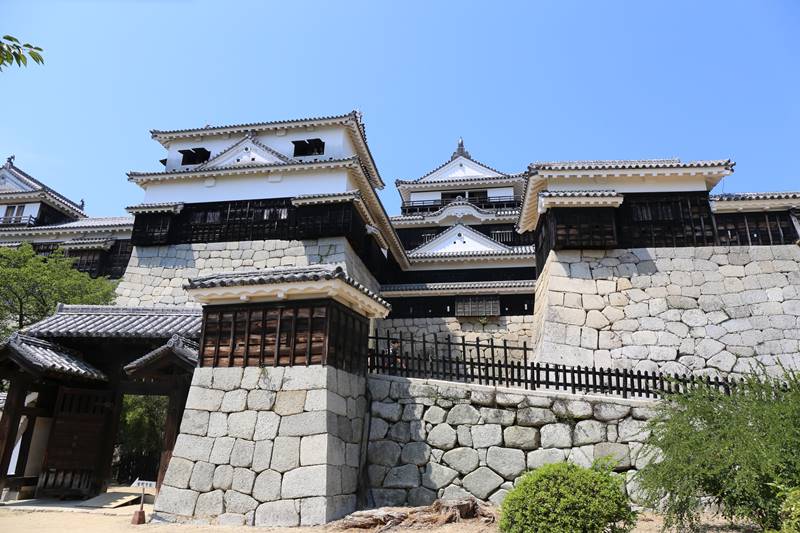This is all about Matsuyama Castle Ruins you want to know.
Every information you get on this site will be from a credible source based on Japanese history (books for reference).

Collected by the Inagaki family, the Toba Daimyō from the mid-Edo period to the Meiji Restoration, as materials for military studies. There are about 350 illustrations, but there is no uniformity because only illustrations of castles, illustrations including castle towns, and old battlefield illustrations are mixed.
Another typical example of castle picture in the Edo period exists, "The Shōhō Shiroezu", picture of the castle and castle town that the Edo Shogunate ordered the daimyō to create and submit,aggregating military information such as the buildings inside the castle, the height of the stone wall, the width of the moat and the water depth, etc., it also details the location and shape of the castle town and the mountain river.
Profile : Matsuyama Castle Ruins
| Location | Matsuyama City, Ehime Prefecture |
| Also known as | Iyomatsuyama Castle, Kinki Castle, Katuyama Castle |
| Type of castle | Hilltop |
| Mountain's name | Mt. Katsuyama |
| Elevation | 132m |
| Condition | Reconstructed main keep |
| Designation | National Important Cultural Properties National Historic Sites |
| Year built | 1602 |
| Abolished | 1873 |
| Castle lord | Katō Yoshiaki |
| Refurbishment lord | Matsudaira Katsuyoshi |
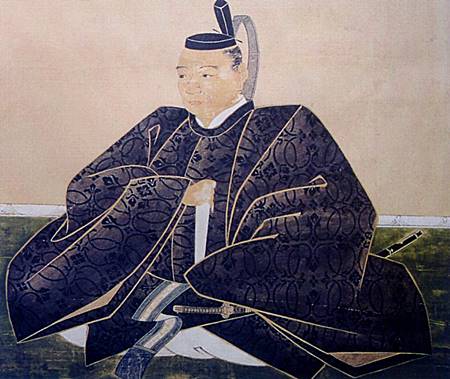


adapted from "Classical Japanese National Data Set" (Kokubunken Collection)
The family crest was originally created from the pattern that the emperor and the royal family put on the kimono, and the pattern was made into a fixed pattern, and the one attached to his own oxcart is said to be the beginning of the family crest. The warlords drew large crests on the flag-fingers, used to distinguish enemy views on the battlefield, and used by the generals to determine which warlords were active and how much.
Matsuyama Castle admission
admission fee : 520yen (Adult) 160yen (elementary school students) free: Ropeway / Lift
admission time : (August) am9-pm5:30 (Febrary 1-July 31, September 1-November 30) am9:30-pm5 (December 1- January 31)am9-pm4:30 ※main keep
Ropeway:(December 1-January 31) am8:30-pm5 (Febrary 1-July 31) am8:30-pm5:30 (August) am8:30-pm6 (September 1-November 30) : am8:30-pm5:30
Lift:am8:30-pm5 open everyday
closing period : third Wednesday of December reference official site (japanese)
Matsuyama Castle Google Map
Matsuyama Castle Images
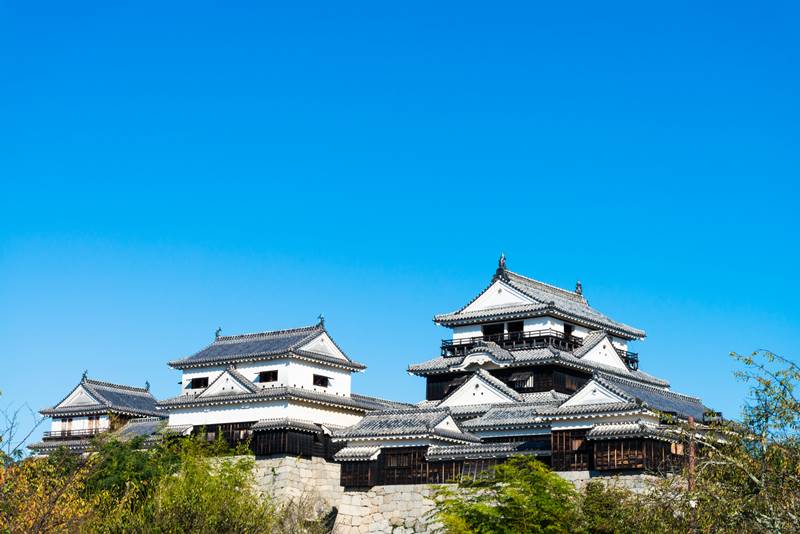
Matsuyama Castle was completed when Katō Yoshiaki started construction of a castle, and was completed 25 years after Mr. Gamō in Matsudaira's era. Large main keep has three level/three floor and Large main keep, Small main keep, Minamisumi Yagura and Kitasumi Yagura connected by a corridor, forming a complex style. In addition, several yaguras are connected by fences. Himeji Castle and Wakayama Castle are similar castles, but these are the most complex structures.

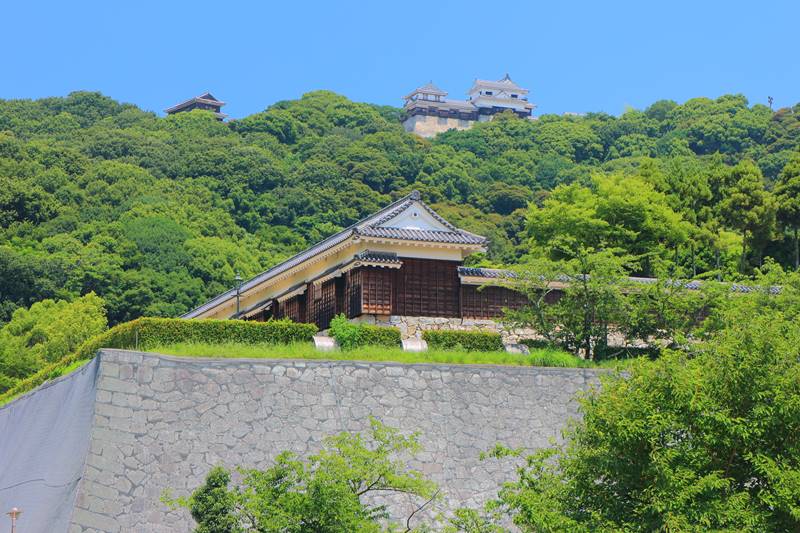
It is connecting Honmaru and Ninomaru to prevent them from being separated, which has a defense technique used to protect the castle from enemy attacks when Japanese invasions of Korea occured, (invasion war in which Toyotomi Hideyoshi dispatched troops to Korea to conquer China). This has been confirmed only in a few castles, such as Ōzu Castle and Hikone Castle.
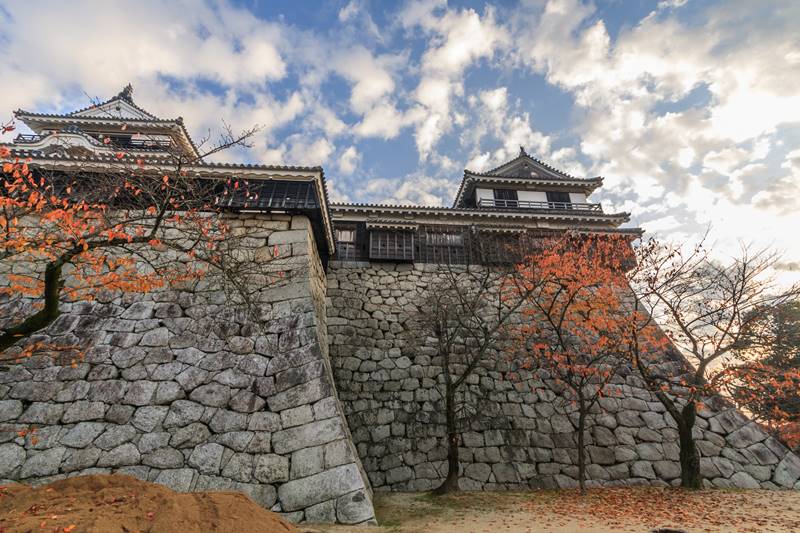
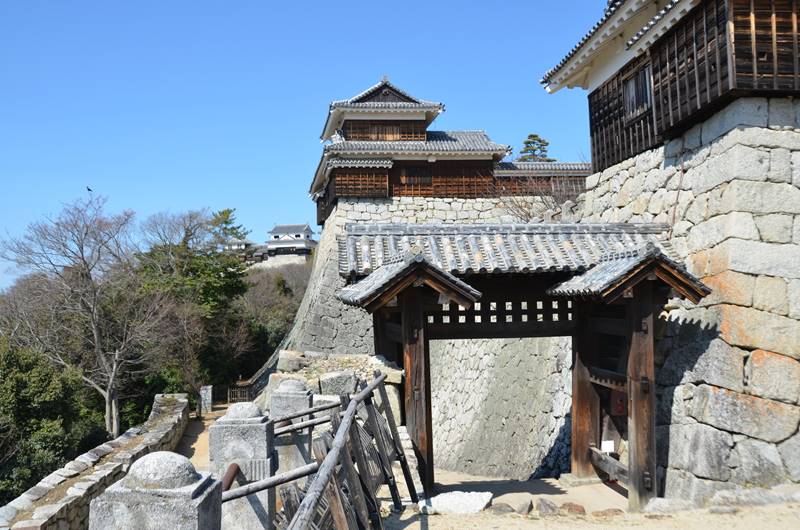
Tonashimon Gate is The first gate (Kōraimon) leading to Honmaru from Ōte-suji(Main road). To get here from Ninomaru, you have to climb the curved road many times. Taiko Yagura standing on a 15.5m high tall stone wall that draws a beautiful curve was behind Tonashimon Gate and had the role of intercepting enemies. There is a fence of about 24m between Taiko Yagurar and Taikomon Gate, which is equipped with a gun gap and a stone dropping windows.
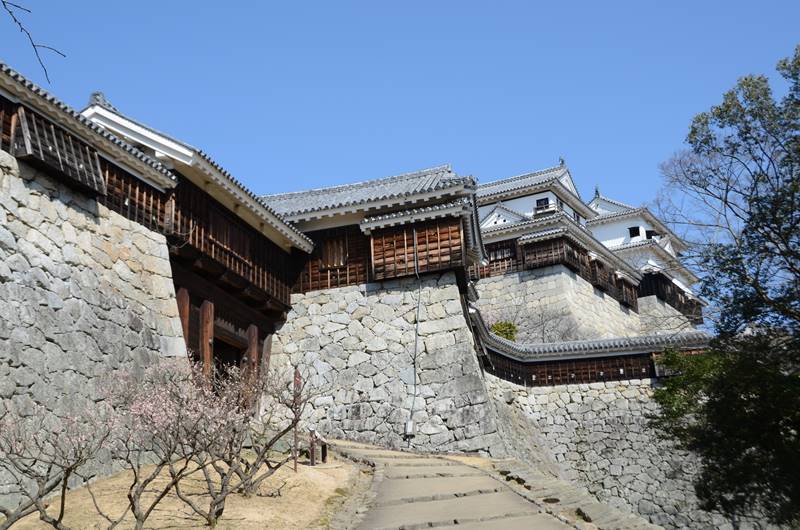

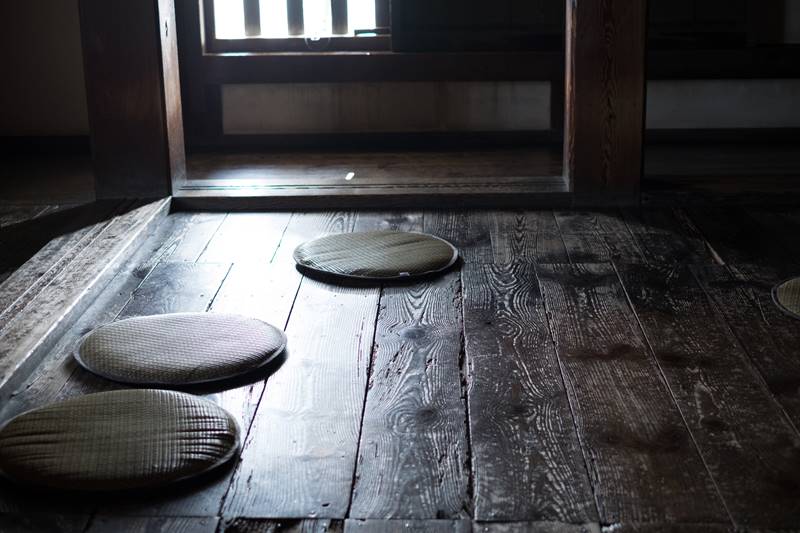
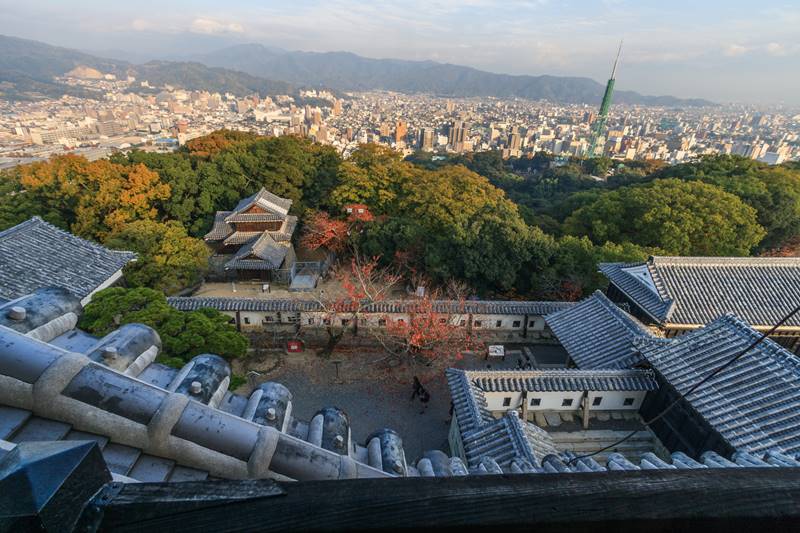
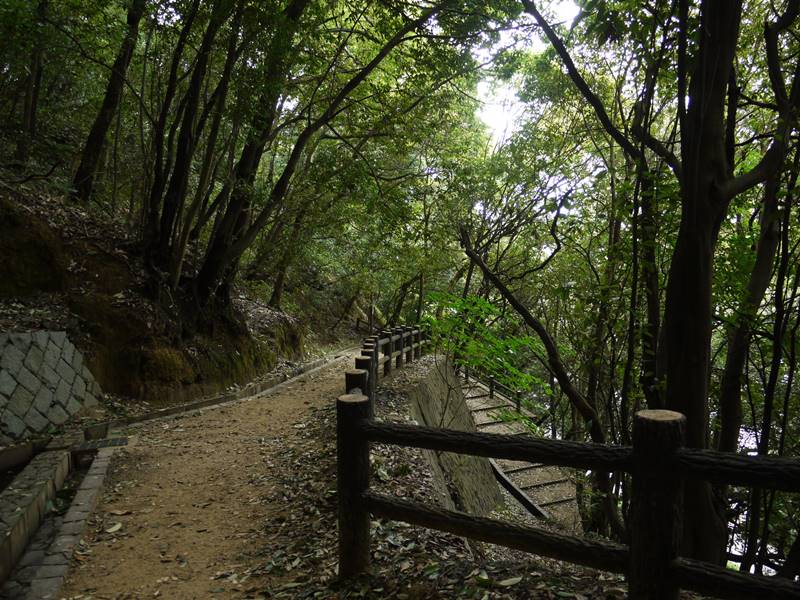

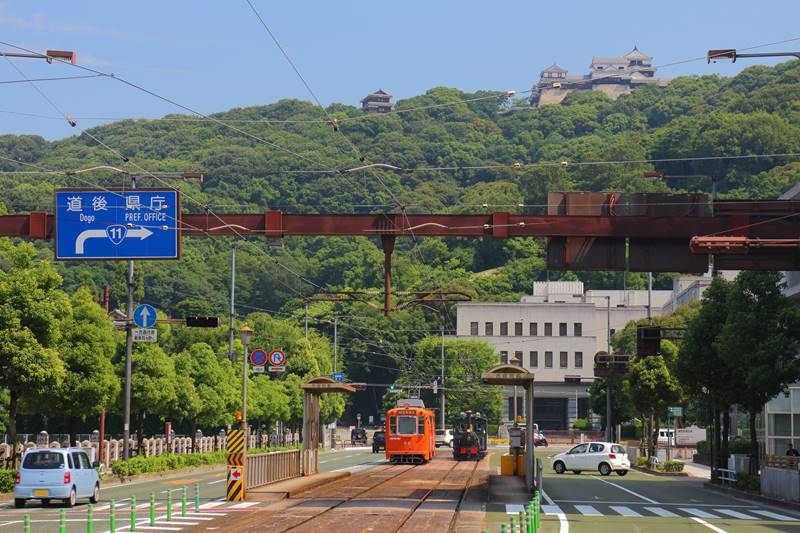
"Bocchan Train" running in Matsuyama City (Matsuyama Station, Furumachi, Dōgo Onsen Station, etc.) to entertain tourists.
The name is based on the fact that the characters used in Natsume Soseki's novel "Bocchan" added "Train" to the title, and people became familiar with it. (from IYOTETSU official site)
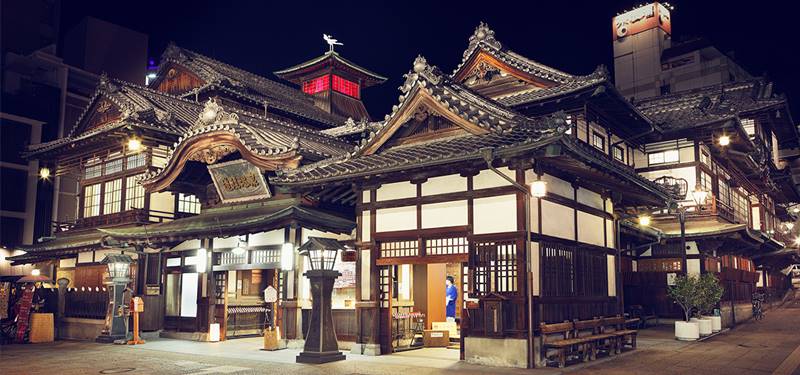
reference official site
Link-1 : Japanese three most great hilltop castle
【west japan】Tsuyama Castle 【west japan】Himeji Castle 【west】Matsuyama Castle
Link-2 : Original Main Keep
【west japan】Marugame Castle 【west japan】Bicchūmatsuyama Castle 【west japan】Matsue Castle 【west japan】Himeji Castle 【west japan】Hikone Castle 【central japan】Inuyama Castle 【central japan】Matsumoto Castle 【central japan】Maruoka Castle 【north japan】Hirosaki Castle 【west japan】Kōchi Castle 【west japan】Uwajima Castle 【west japan】Matsuyama Castle
